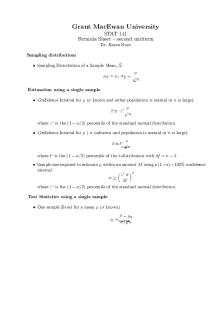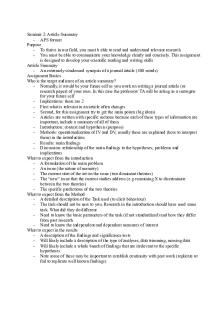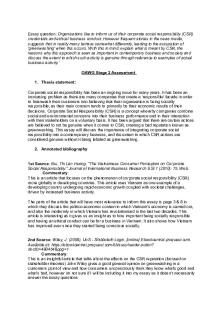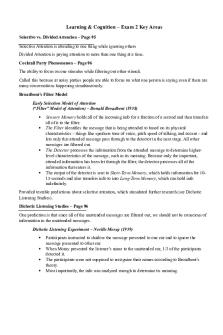Catheters - Lecture notes 2 PDF

| Title | Catheters - Lecture notes 2 |
|---|---|
| Course | Medicine |
| Institution | Chung Shan Medical University |
| Pages | 3 |
| File Size | 237.3 KB |
| File Type | |
| Total Downloads | 102 |
| Total Views | 163 |
Summary
…………………………………………………. …………………………………………………. …………………………………………………. …………………………………………………. …………………………………………………. …………………………………………………. …………………………………………………. …………………………………………………....
Description
Urinary bladder catheters (Foley) ) INDICATION
Management of urinary retention. urine output measurement During surgery prevent bladder overdistention Management of hematuria associated with clots. immobilized patients. neurogenic bladder. Management of open wounds located in the sacral or perineal regions Intravesical pharmacologic therapy (eg, bladder cancer).
CONTRAINDICATIONS
Absolute: urethral injury / hematuria, which is typically associated with pelvic trauma. Relative: urethral stricture, recent urinary tract surgery, and the presence of an artificial sphincter.
COMPLICATIONS
urinary tract infection Epididymitis Retained balloon fragments — Spontaneous rupture of the urinary catheter balloon Bladder fistula — The presence of air or feces in the urine of a patient with an indwelling catheter may indicate the formation of a fistula. between the bladder and small intestine, colon, rectum, or vagina. Bladder perforation — Bladder perforation, both intraperitoneal and extraperitoneal, is rare Bladder stone formation — Stones can form in the bladder due to the presence of a foreign body.
central venous catheter (CVC) = Central line * 3 veins can be used : Subclavian V. > Jugular V. > Femoral V.
*2 ~ 4 周左右
*distal tip should lie in the lower superior vena cava, outside the right atrium and above the pericardial reflection. INDICATIONS
Peripherally incompatible infusions – Long-term administration of medications such as vasopressors, chemotherapy, blood product , and Total parenteral nutrition (TPN,全靜脈營養) Prevent vein inflammation (phlebitis) when given through a peripheral intravenous catheter. Hemodynamic monitoring –CVP,central venous pressure, venous oxyhemoglobin saturation (ScvO2), and cardiac parameters (via pulmonary artery catheter). Extracorporeal therapies – Large-bore venous access is required to support high-volume flow required for many extracorporeal therapies, including renal replacement therapy (ie, hemodialysis) and plasmapheresis. placement of other medical devices, including: o Vena cava filters o Venous thrombolytic therapy/venous angioplasty/venous stenting o Pulmonary artery catheters o Pacemakers/defibrillators
CONTRAINDICATION
:
Coagulopathy and/or thrombocytopenia
COMPLICATIONS
Pneumothorax, Delayed collapsed lung(...
Similar Free PDFs

Catheters - Lecture notes 2
- 3 Pages

Lecture notes, lecture 2
- 3 Pages

2 - Lecture notes 2
- 5 Pages

Lecture notes, lecture Chapter 2
- 11 Pages

Lecture notes, lecture formula 2
- 1 Pages

2 Biodiversity - Lecture notes 2
- 33 Pages

Chapter 2 - Lecture notes 2
- 30 Pages

Blaw 2 - Lecture notes 2
- 4 Pages

Chapter 2 - Lecture notes 2
- 4 Pages

Seminar 2 - Lecture notes 2
- 2 Pages

Stage 2 - Lecture notes 2
- 3 Pages

Exam 2 - Lecture notes 2
- 5 Pages
Popular Institutions
- Tinajero National High School - Annex
- Politeknik Caltex Riau
- Yokohama City University
- SGT University
- University of Al-Qadisiyah
- Divine Word College of Vigan
- Techniek College Rotterdam
- Universidade de Santiago
- Universiti Teknologi MARA Cawangan Johor Kampus Pasir Gudang
- Poltekkes Kemenkes Yogyakarta
- Baguio City National High School
- Colegio san marcos
- preparatoria uno
- Centro de Bachillerato Tecnológico Industrial y de Servicios No. 107
- Dalian Maritime University
- Quang Trung Secondary School
- Colegio Tecnológico en Informática
- Corporación Regional de Educación Superior
- Grupo CEDVA
- Dar Al Uloom University
- Centro de Estudios Preuniversitarios de la Universidad Nacional de Ingeniería
- 上智大学
- Aakash International School, Nuna Majara
- San Felipe Neri Catholic School
- Kang Chiao International School - New Taipei City
- Misamis Occidental National High School
- Institución Educativa Escuela Normal Juan Ladrilleros
- Kolehiyo ng Pantukan
- Batanes State College
- Instituto Continental
- Sekolah Menengah Kejuruan Kesehatan Kaltara (Tarakan)
- Colegio de La Inmaculada Concepcion - Cebu



